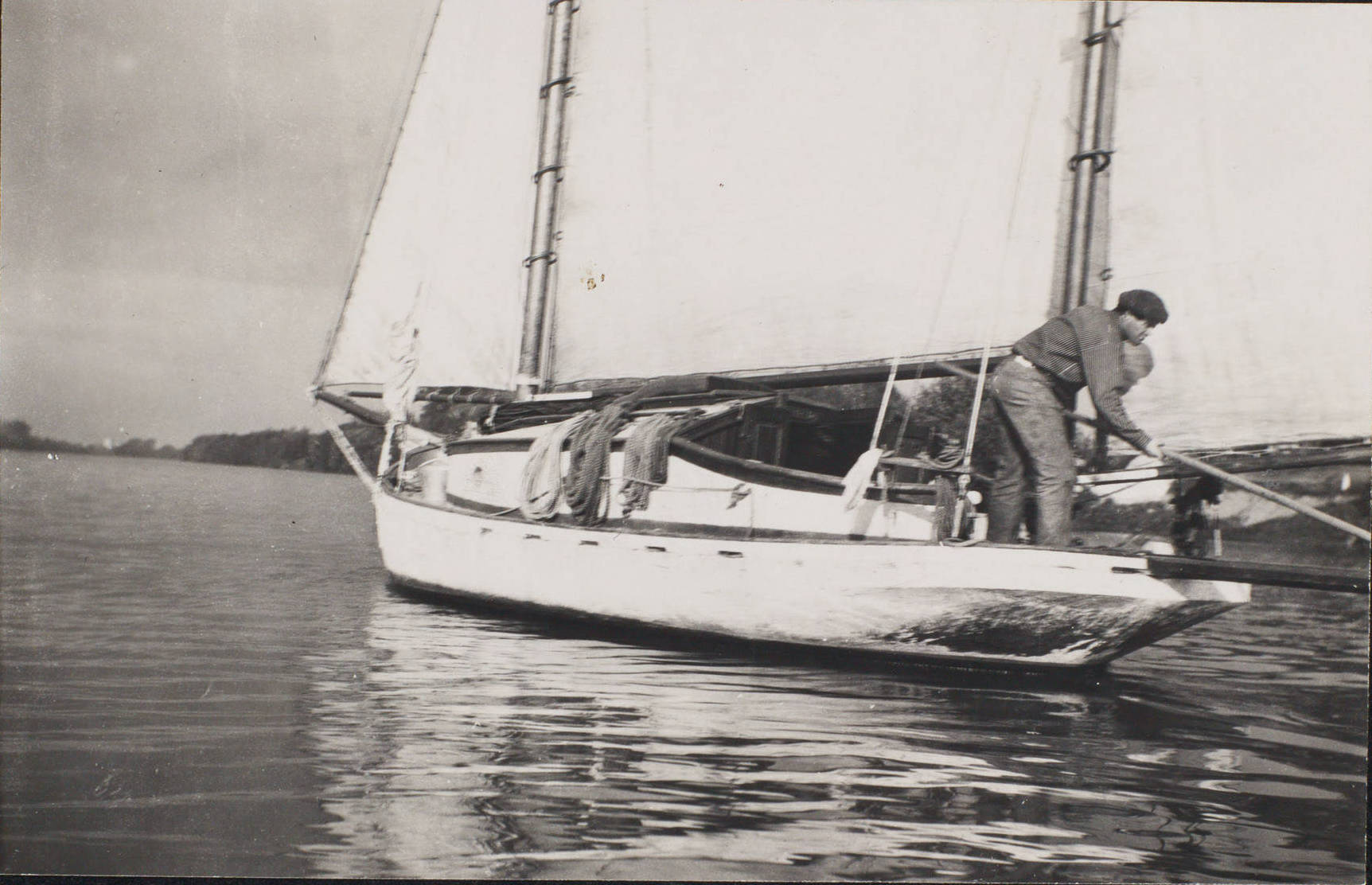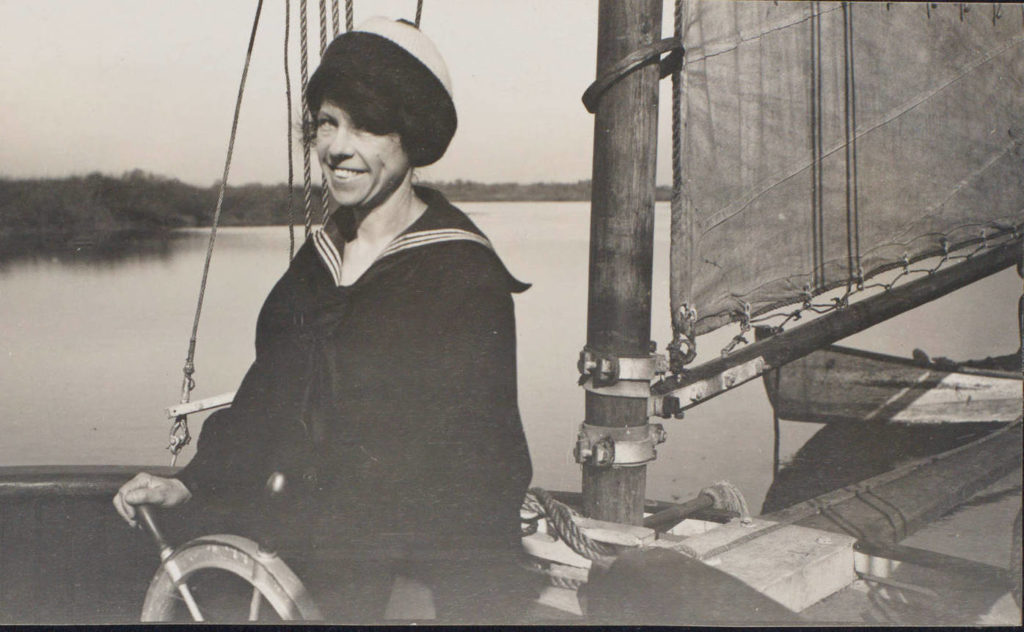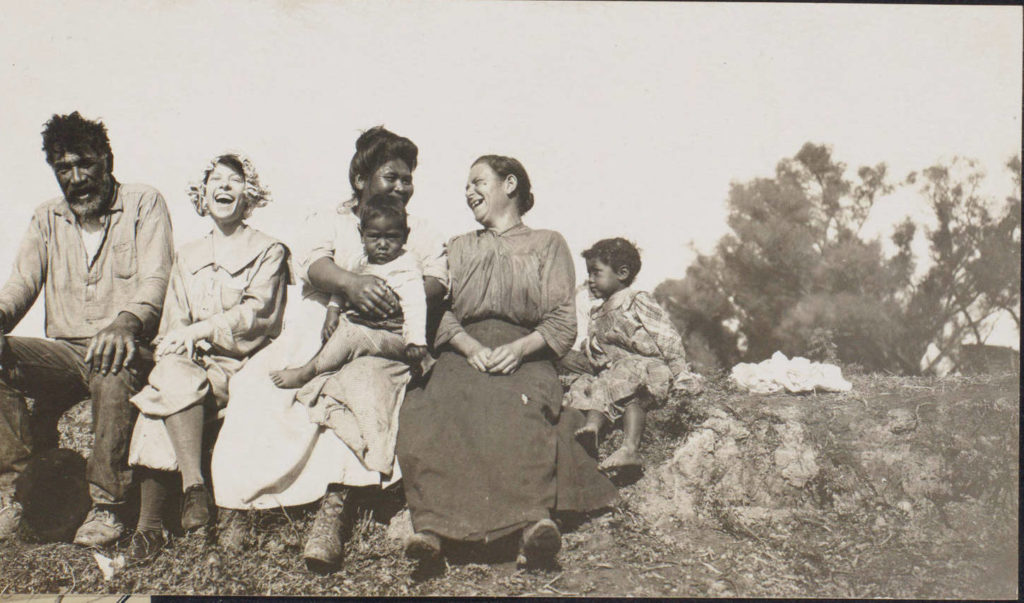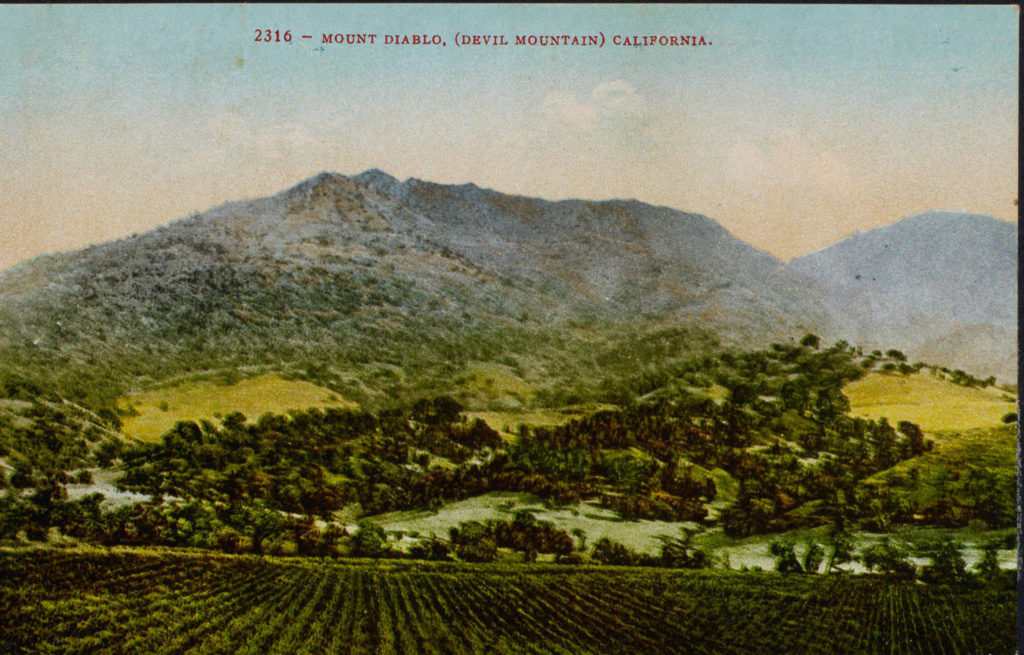
Jack London usually sailed west whenever he left the Oakland Municipal Wharf, but on December 18, 1913, he headed east — because he could. Although the canal connecting the Oakland Estuary to San Leandro Bay had been completed in 1902, it wasn’t until the U.S. Army Corps of Engineers widened and deepened the canal in 1913 that it became navigable.
Aboard the Roamer, a 30-foot yawl London bought used in 1910, Jack and his wife, Charmian, approached the Park Street Bridge. “Mate has to hustle for an hour or so to get Park St. Bridge open + we’re first boat that it ever opened for,” Charmian wrote in her diary. The Fruitvale and High Street bridges also swung open, and the couple completed their sail through the Oakland Inner Harbor Tidal Canal. They anchored off Alameda near the old oyster beds, shot a duck, and ate it with artichokes from an Alameda farm.
From 1910 to 1915, well-known American writer Jack London and his wife Charmian spent at least a month a year on the Roamer. Jack wrote most mornings — 1,000 words a day, he claimed — but mostly they sailed and explored the Bay and Delta, or as Jack said, “up Bay and down.” Charmian kept a diary of their explorations, and her truncated observations provide a snapshot of the Estuary in the early 20th century.

“They loved being on the Roamer because it gave them an escape from Jack’s celebrity,” says Iris Jamahl Dunkle, who used Charmian’s diaries extensively for her new biography, Charmian Kittredge London: Trailblazer, Author, Adventurer, released by University of Oklahoma Press this month.
One thing that stands out in Charmian’s entries is how well she and Jack ate while on the Bay. They preferred their striped bass raw and their duck nearly so. They ate fish chowder made of “shiners, pike, perch and catfish” from the Delta, and fished for rock cod and netted crabs near Hospital Cove (now Ayala Cove) off Angel Island. One day in October 1914 they caught more than 40 rock cod. Charmian wrote, “Early crab lunch with salmon caviar, stuffed celery, fried clams, cauliflower toast…Soldiers fishing + swimming off Angel Island.”
On the water they witnessed the rise of the Panama-Pacific International Exposition grounds in San Francisco; skirted clam-dredges, hay scows, and wheat ships; watched the tides carefully; and executed tricky sailing maneuvers through slender sloughs and southeasters. Occasionally, Jack walked into towns such as Martinez and Pittsburg to read Call of the Wild to schoolchildren.
In October 1913, the pair went to Knight’s Landing on the Sacramento River, and drove by car to see the rice fields. “First rice we ever saw in Cal,” wrote Charmian, adding that the man behind the rice was meatpacking magnate J. Ogden Armour. He was helping to finance Reclamation District 1500 in the Sutter Basin, but work begun that year to build levees was met with resistance and held up in litigation for many more.

In December 1914, they anchored in Benicia “where the Solano + the new Contra Costa ply back + forth.” Before the Contra Costa was built and put into service that year, the Solano was the largest railroad ferry in the world, capable of carrying up to 48 cars between Benicia and Port Costa, where the railcars coupled to engines and continued their routes.
One of the defining characteristics of the Bay at the turn of the century — and before — was its vibrant immigrant communities, and Charmian touched on these ethnically diverse populations in her diary several times. The Roamer frequently stopped in Walnut Grove on the Sacramento River, where the Londons enjoyed Japanese dinners with sake, and asked Yoshimatsu Nakata, Jack’s valet, to bet on the lottery since white people weren’t allowed to participate.
At the mouth of the Feather River, they met the “famous Kanakas,” wrote Charmian, including a “quaint + loveable old Hawaiian” that had lived there for 22 years. The Kanakas and their wives brought salmon, striped bass, and carp as gifts.

Near Stockton they stopped at what Charmian described as “a God-forsaken Japanese work-place where the baby-eyed young….mother cooks for 40 or 50 men! Such a dreadful life the poor, sweet little ‘picture-wives’ are lured into!” She didn’t mention, however, how federal and state immigration laws had contributed to the existence of these camps. In 1913, California passed a law forbidding immigrant farmers from owning land, even though Chinese and Japanese farmers had farmed the Delta for decades.

The Bay has gone through many changes, and continues to change today, but a constant then and now is Mount Diablo. Seen from Georgiana Slough, Charmian described how the “lovely composition is drawn together by Mt. Diablo. So clear + sharp, + even from here we can see the crinkles!” On another day she noted the “cloudy-sunny-wondrously beautiful Mt. Diablo.” On a November cruise she wrote, “Sierras white with snow, Mt. Diablo + its range clear-cut sapphire. Tule glistening laid flat. Spouting surf on lee shores in some places. Big scow aground. Ducks flying low.”
Aleta George is at work on a book about Jack London and the San Francisco Bay. The entries quoted here are from the original diaries, JL 215-233, Jack London Papers, The Huntington Library, San Marino, California.
All photos courtesy The Huntington Library, San Marino, California